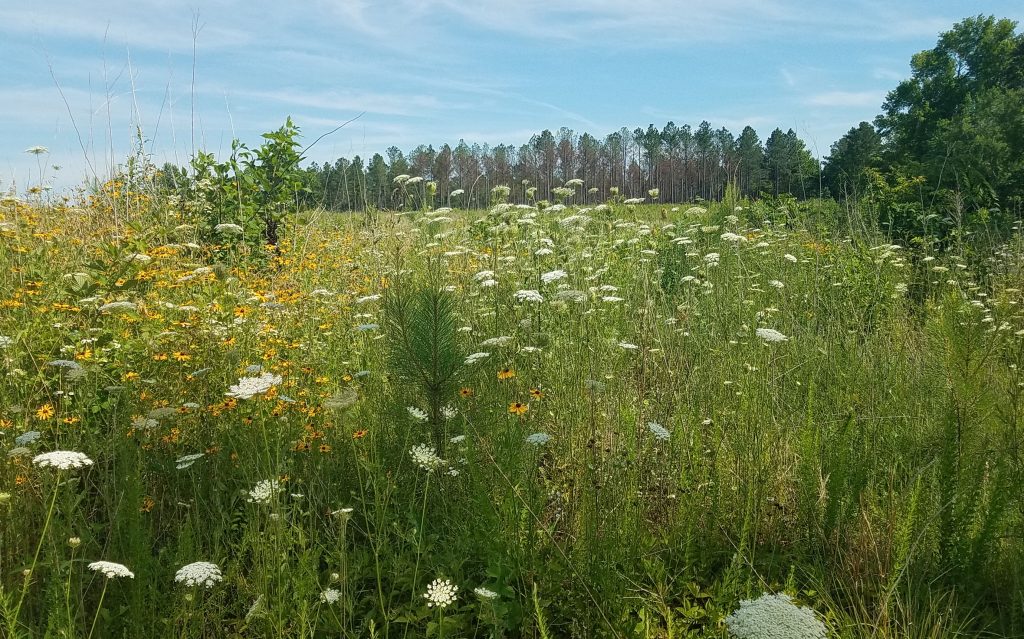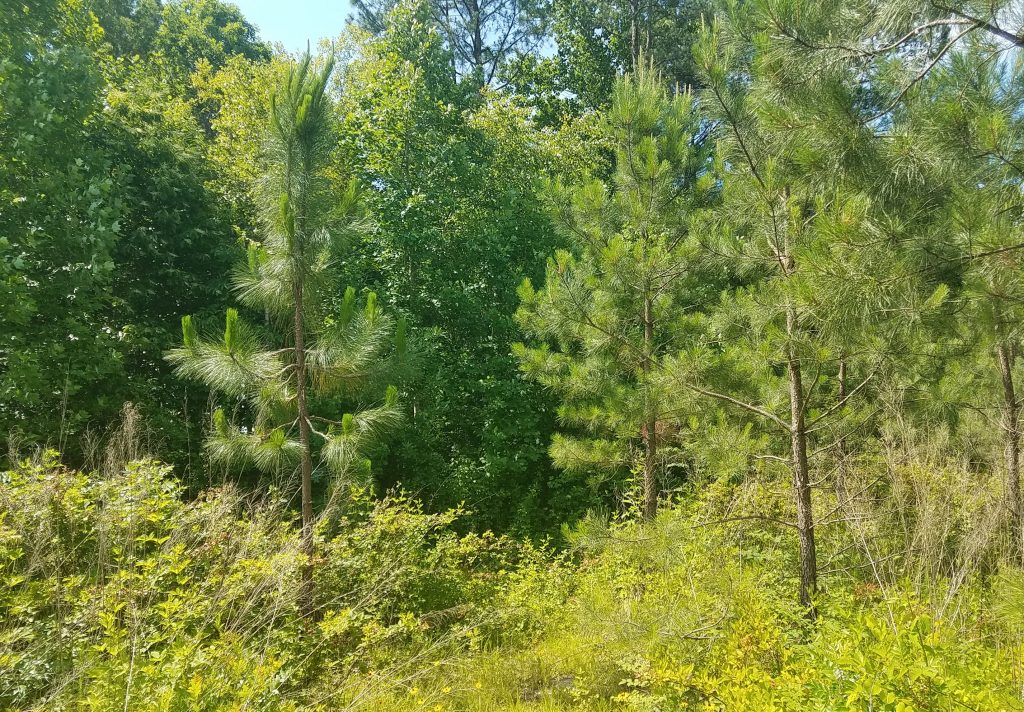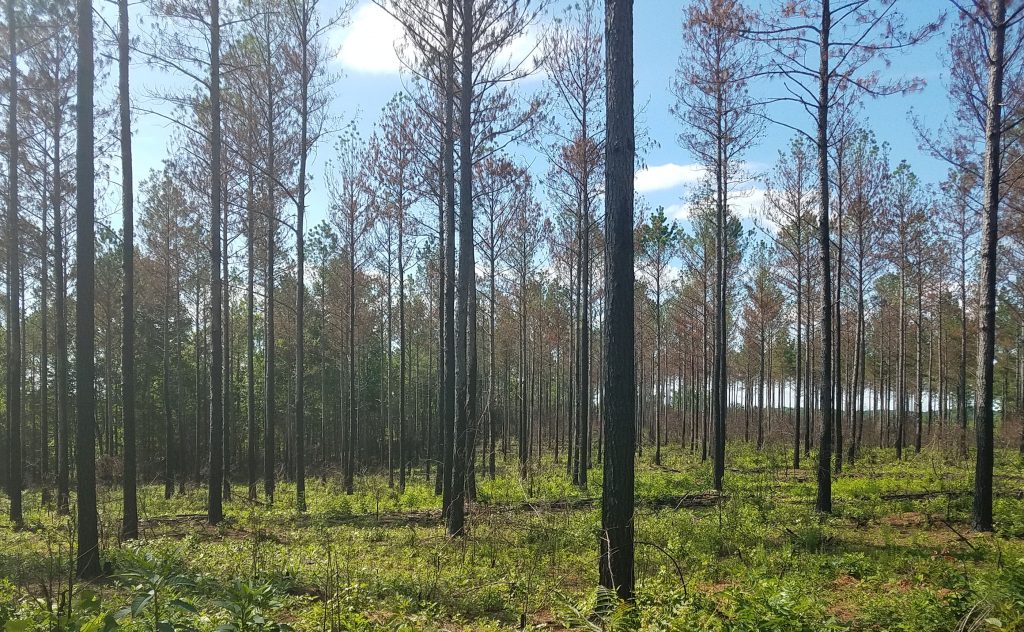
Went down to the farms to look at the thinning and burning. Besides just being in my forests and checking on those things, my goal was to try to get rid of some of the ailanthus. It is an endless struggle. I wish that other – useful – trees were so resilient. I have trouble telling ailanthus from sumac at a distance and sometimes even close. I don’t doubt that I have been knocking off sumac too. Sumac, I like so I am not happy about that. Sumac does well with fire, at least that is what I observed. I see a lot of it sprouting from the roots after the burns.
I still worry that the Brodnax fire was a bit too hot. The heat plumes scorched the needles. Some of the local guys who know fire told me that scorch does not kill southern pine, and that they would come back. I looked carefully today (see picture). Most of the trees have some green again. They will probably make it. Still, I think in future I will want only dormant season burns, and certainly not after they have candled. The anxiety is too much. You can see the picture of what the trees on the other side of the fire line looks like. The fire top killed the hardwoods. On this land, we are doing patch burns, one-third each year, so we will go after the far section next year and the adjacent one year after that. That will give us a chance to see the variation and maybe start over again.
Longleaf are doing well on the Freeman place. I went after a few ailanthus among them and knocked out some sweet gum and yellow poplar for good measure. None of them were big problems. I think the fire does a good job on them. Still not sure if we will burn this next year. I keep going back and forth about it. Not even sure if I will burn the thinned acreage. The cutter, Kirk McAden, did a really good job and made easy to use fire lanes. We are going to plant a couple thousand longleaf before Christmas this year. We have around five acres of that we clear cut. The trees were twenty-two years old and the tract had not been thinned. I feared that if we thinned they would be too likely to be damaged by ice or wind storms. They had been growing so tight that they did not develop strong enough roots or branches.
I am going to replant myself and get he kids to help. That may be a good reason to burn, to clear up some of the crap so that they will have an easier time. Next year (2019), we will plant a lot more into the openings (we created ¼ acre openings on every acre, i.e. 80 acres x ¼ acre or 20 acres total. Along with some trees under to loblolly, that will be around 10,000 trees. I think I will need to hire a crew to do that. It is a bit too much for the kids and me.
Loblolly are just easier to grow than longleaf. I was looking at the Brodnax place where we planted about 30 acres of loblolly and a little more than 15 of longleaf in 2016. The loblolly now come up to my waist and they are competing well with the vegetation, see the picture below. The longleaf are still in the grass stage and I am not sure the ones in the vegetation are even alive. We burned last year. This top killed the hardwood brush by the other vegetation came up like mad. You really don’t need to plant loblolly at all. They come up whether you want them or not. There are probably twice as many loblolly now growing than we planted. In theory, the planted ones are better genetically and will grow faster. We will see in a couple years if the rows are much better than the random. I bet that there are more natural regenerated loblolly on the longleaf plots than there are longleaf.
Anyway, thinking about how the forests are growing is a great joy. I have an idea of what I want and I guess about how it will play out, but it is always a surprise.
Picture up top shows the loblolly among the ground cover on Brodnax. The first one below is the longleaf on Brodnax. You can see the difference Bu.t they CAN grow similarly. The next picture shows a longleaf and a loblolly on Freeman. Both were planted in 2012 and they are just about the same size. Below that are pictures of the un-burned and the burned one next to it.




